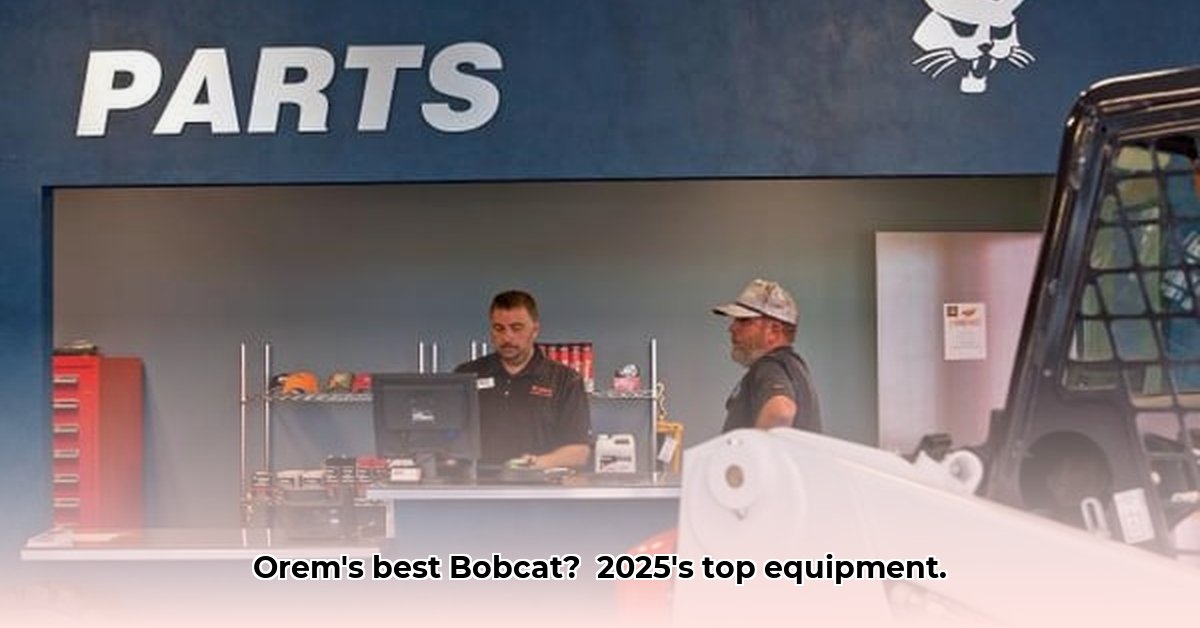
Intermountain Bobcat Orem Utah: A 2025 Equipment Deep Dive
Bobcat's ambitious 2025 strategy, particularly through Intermountain Bobcat in Orem, Utah, warrants a thorough examination. This review analyzes their equipment lineup, competitive positioning, and strategic direction, offering actionable insights for stakeholders.
Bobcat's Expanding Product Line: Beyond the Basics
Bobcat's expanded product line demonstrates a strategic shift towards greater market diversification. New models ranging from compact track loaders and excavators to zero-turn mowers aim to capture a wider customer base. Specific examples include the R2-Series E60 compact excavator, ideal for smaller-scale projects, and the expanded R-Series compact equipment (all under 75 horsepower), targeting efficiency-focused operations. The addition of a new zero-turn mower line and the inclusion of brands like Denis Cimaf, Morooka, and Mean Green Mowers through their dealer network underscores this expansion. The inclusion of the E165 large excavator signals Bobcat's intent to compete in the large-scale project market. But how effectively does this broadened portfolio translate to market success? This requires further data analysis.
The Competitive Landscape: A Need for Clarity
While Bobcat highlights productivity gains of its new equipment, a comprehensive competitive analysis is lacking. Crucially, data on market share, pricing strategies of competitors, and performance benchmarks are absent. Without this quantitative information, assessing Bobcat's true competitive advantage remains challenging. Future evaluations require detailed comparative data on cost, performance, and efficiency against key competitors. How can Bobcat effectively demonstrate its value proposition without a clear picture of the competition?
Market Segmentation and Value Proposition: Targeting the Right Customer
Bobcat must clearly define its target customer segments. The needs of large construction firms differ significantly from those of smaller landscaping businesses. Tailoring equipment offerings, pricing strategies, and marketing communication to these distinct segments is crucial. A large-scale customer might prioritize power and durability, whereas a small business might prioritize maneuverability and affordability. Failing to account for these nuanced needs could hinder market penetration.
Actionable Recommendations: A Roadmap for Success
To enhance market positioning and achieve sustainable growth, Bobcat and its dealers should implement the following strategies:
For Bobcat Management:
- Conduct comprehensive market research: Analyze competitors' offerings, pricing, and market penetration.
- Develop measurable metrics: Quantify the performance and productivity gains of new equipment lines through independent testing.
- Implement targeted marketing: Utilize data-driven strategies to reach specific customer segments.
- Explore strategic partnerships: Collaborate with complementary businesses to expand capabilities and reach.
For Bobcat Sales and Marketing Teams:
- Highlight tangible benefits: Emphasize the direct return on investment (ROI) and operational efficiencies of Bobcat equipment.
- Showcase the diversified portfolio: Demonstrate the versatility and broad applicability of the equipment range.
- Implement a robust CRM system: Enhance lead generation and optimize customer relationships.
For Dealers, such as Intermountain Bobcat in Orem, Utah:
- Provide comprehensive staff training: Equip employees with in-depth product knowledge and sales expertise.
- Optimize inventory management: Align inventory with predicted demand for new equipment models.
- Collaborate with Bobcat: Share customer feedback and market insights to inform product development and marketing strategies.
Risk Mitigation Strategies: Preparing for Challenges
The construction equipment sector faces various risks. Proactive mitigation strategies are essential for sustainable growth.
| Risk Factor | Likelihood | Impact | Mitigation Strategy |
|---|---|---|---|
| Intense Competition | High | High | Ongoing innovation, robust brand differentiation, strong dealer network |
| Supply Chain Disruptions | Medium | Medium | Diversified sourcing, strong supplier relationships, strategic inventory management |
| Economic Downturn | Medium | High | Flexible pricing, cost optimization, targeted marketing |
| Equipment Performance Issues | High | Medium | Rigorous quality control, proactive customer support, continuous improvement programs |
| Regulatory Compliance Issues | Low | Medium | Proactive monitoring of regulations, compliance programs |
Conclusion: A Data-Driven Path to Success
Bobcat's success hinges on a data-driven approach. Thorough market research, competitive analysis, and precise customer segmentation are crucial for sustainable growth. By embracing this strategy, Bobcat and its dealers can successfully navigate the dynamic construction equipment market and achieve long-term success. Continuous monitoring and adaptation are vital for sustained competitiveness.